Tamiya Mini (or M-Chassis) cars are something I have always admired through my years in the hobby. I’ve even owned a couple M-03’s but never really got into their full potential. That’s to say I’ve never raced one. The class has always appealed to me because the cars are smaller, typically more detailed, and unique in comparison to most “racing” touring cars. The bodies are usually replicas of small cars like the Honda CRX, Mini Cooper, or Mazda Miata (although there is a slew of body options out there).
What drew me back to looking into this class for racing was the closure of the local dirt off-road track and hence my return to carpet racing for the fall/winter season. This is not a class that has ever been tried in the area, but so far the buzz of it possibly being run has been huge. R/C Kinetics in Troy, NY (about 2 hours away) has successfully introduced this class on their indoor asphalt track and are getting decent turnouts. I can’t wait to take this car out there and try it out. I guess we should probably build it first though.
The M-05 VII (V2) Pro chassis was announced this past spring. It’s now been released and starting to make it’s way into people’s hands. Tamiya Mini’s are run in a mixed class of FWD (M-03 & M-05) and RWD (M-06) cars. They each have their own handling characteristics but are essentially equal in the types of electronics they run and can be pretty closely matched on the track depending on driver.
The M-05 seems to be the more popular choice though. It is the current model being sold in kit form, in everything from the Go-Pro edition, to your run-of-the-mill Mini Cooper. All of these kits are basically the same except they offer different wheel/tire/body combo’s and sometimes use a different wheelbase (any M-05 is configurable in 3 size wheelbases, which one you run is dictated by your body choice). All the “base-level” kits are equipped with a basic esc, silver can motor, bushings, and friction dampers (shocks).
Tamiya in the past has released “Pro” level kits that came with a number of options included in the box including, but not limited to, aluminum upgrades, oil filled dampers, bearings, and special edition plating on the plastic (like the Gold and Silver editions). The M-05V2 Pro is very similar to these, except it throws the whole platform into the new era of r/c and catches up with modern technologies. Among it’s new features are:
- 1 piece A-arms
- Ability to accept “rectangle” shaped (traditional) lipo batteries
- An option to run a low-profile servo for a lower center of gravity
- A more in-line motor plate that draws the motor closer to the centerline of the car for better handling
Those are the main “new features” of the M-05V2 Pro. In addition to those, it also comes with a ton of nice upgrades like blue anodized aluminum parts, black chrome metal looking plated plastic parts, oil shocks, full bearings, and more. The trade-off to all the extra goodies is that you need to supply all of your own electronics, tires, and a body. I’ll touch more on that when we dig into our own build as follows. Let’s dig in!
Since the M-05V2 is a Pro kit, and has no body.. the box art is kind of plain but it’s still got a sweet 2 color look to it.
The above is the body I picked up for my build. It is the Tamiya Mini JCW Coupe body. We mostly see the Mini Cooper and the Swift all the time when looking at this class, so I figured I’d pick something a little unique and less popular.
OMG! Peeling into a fresh Tamiya kit is like unwrapping a present on X-Mas morning. Such a great feeling.
Specs are printed on the side of the box.
This insert is also wrapped around the box and lists a ton of the new features and included upgrades.
As well as the “separately required items”.
Finally, we’re into the box. Tidy Tamiya packaging practices in full effect. Nothing is flopping around that could be broken in shipment.
Here’s the guts of the kit laid out on the ever reliable CowRC Jumbo Screw Catcher Work Mat that I use for every build.
Close-up of the parts bags.
And another.
The ever-important assembly manual.
Follow along through the following pages (see the numbers below) to continue reading about the build.



 August 28th, 2014
August 28th, 2014  Kevin
Kevin 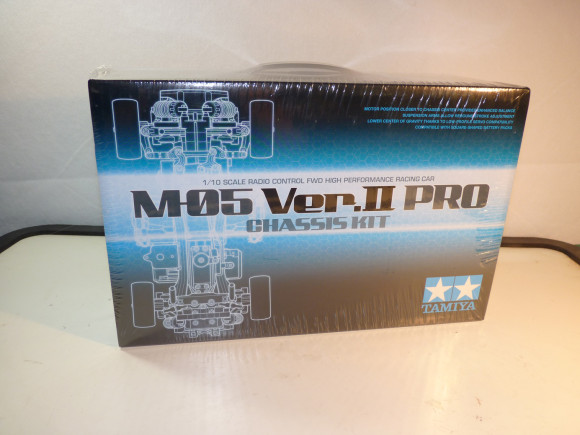
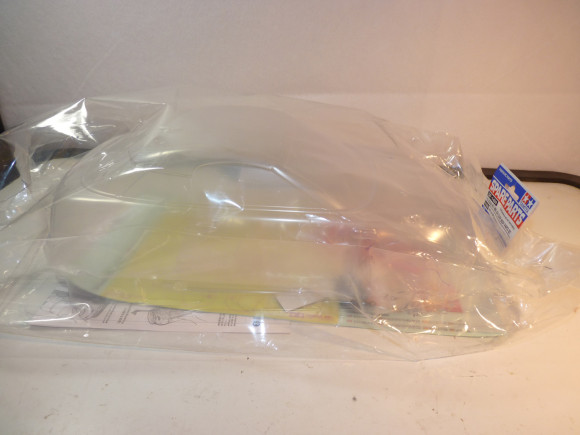
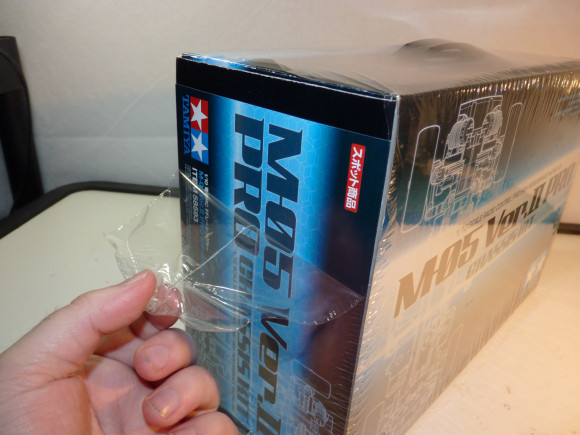
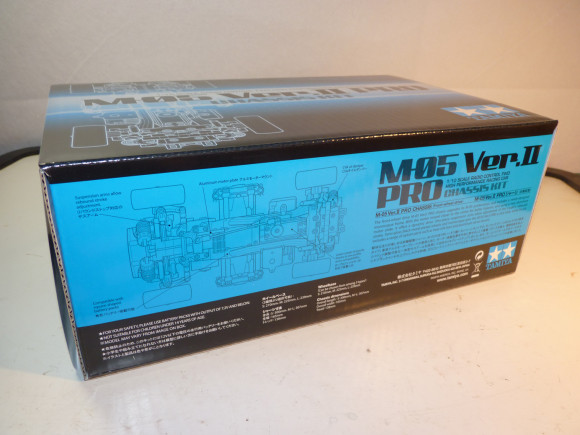
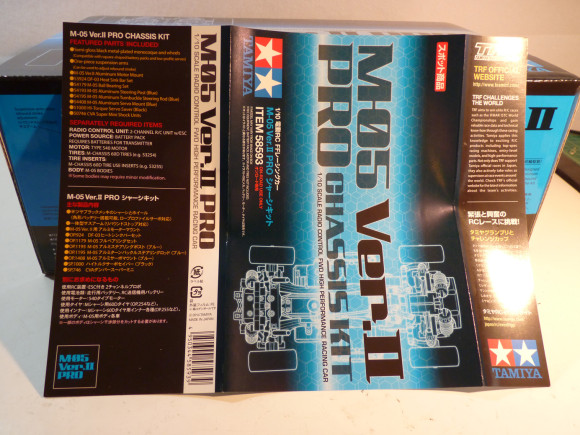
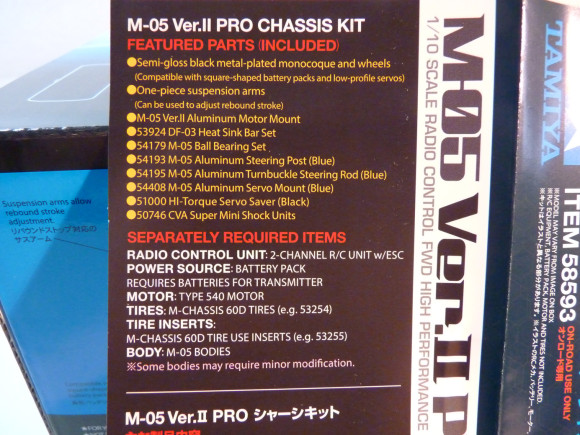
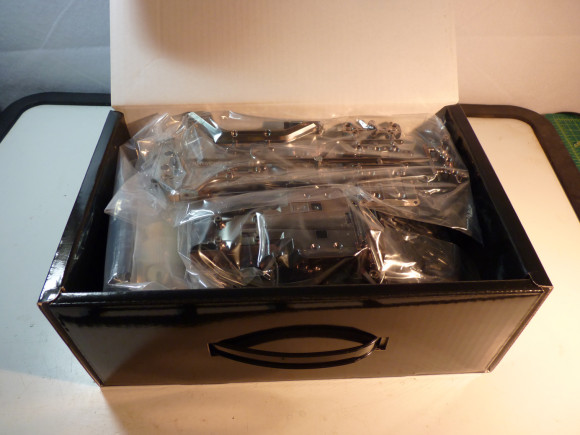
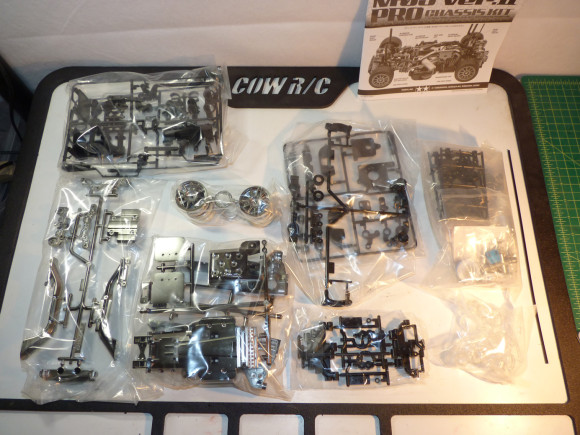
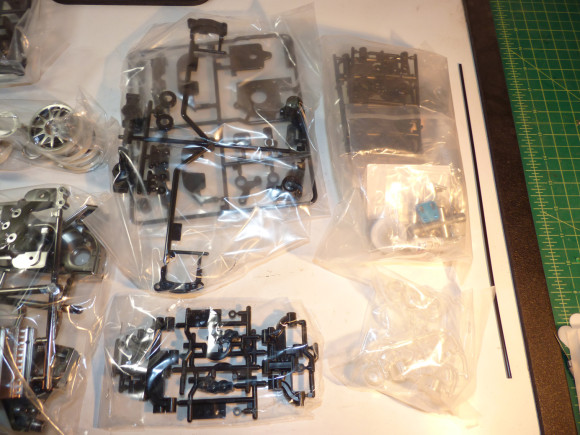
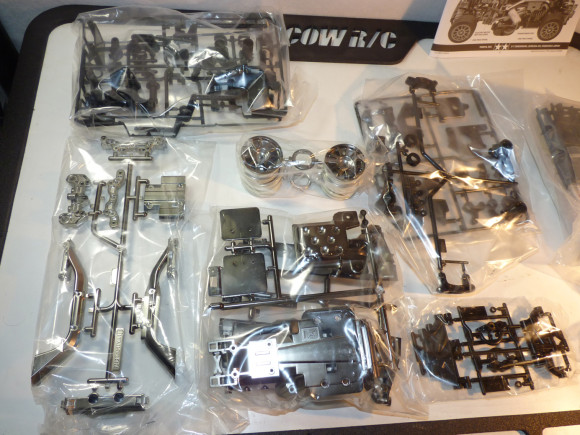
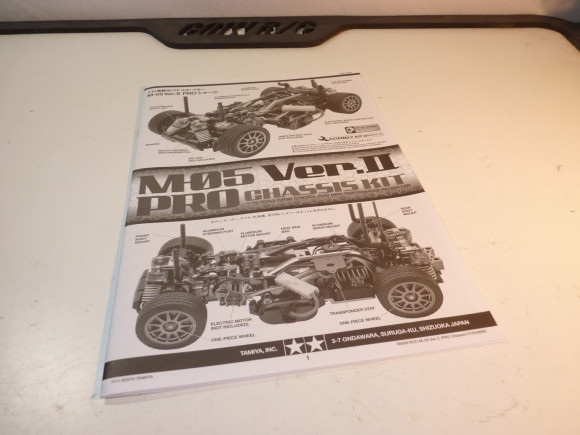
 Posted in
Posted in  Tags:
Tags:
I also ordered a M05 V2 Pro Kit as soon as it came out. The update for making squared batteries fit into the chassis was my main reason. Another good thing is, that all hop-up parts from Tamiya and third party companies still work.
So my tip is to buy only the main chassis parts and attach all already existing things from the “normal” m05 chassis. This way you can save a lot of money and use squared batteries as well.
Best,
T-